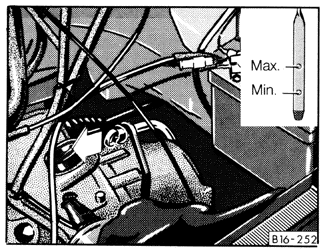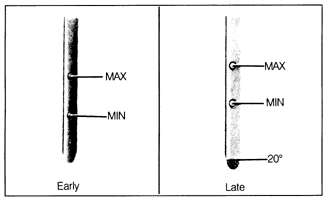Checking and Filling ATFThe location of the dipstick for checking the ATF is shown in Fig. 7-7. Two types of dipsticks used on cars covered by this manual are shown in Fig. 7-8. The level should be checked with the car on a level surface, the ATF warm, the engine idling, the parking brake firmly set, and the transmission selector lever in park. The ATF level is correct if it is between the MIN and MAX marks on the dipstick. The ATF is sufficiently warm if the car is driven approximately 6 mi. (10 km) prior to checking the level.


If the level is too low, use a clean funnel to add ATF as specified in 3. Fluid and Lubricant Specifications until it indicates between the two marks on the dipstick.
Check the condition of the ATF by rubbing some between fingers and sniffing it. The ATF should not be foamy, gritty, or have a burnt odor. Contaminated ATF should be drained and replaced to prevent further damage, but doing so will not repair any internal transmission damage that has already occurred.
|